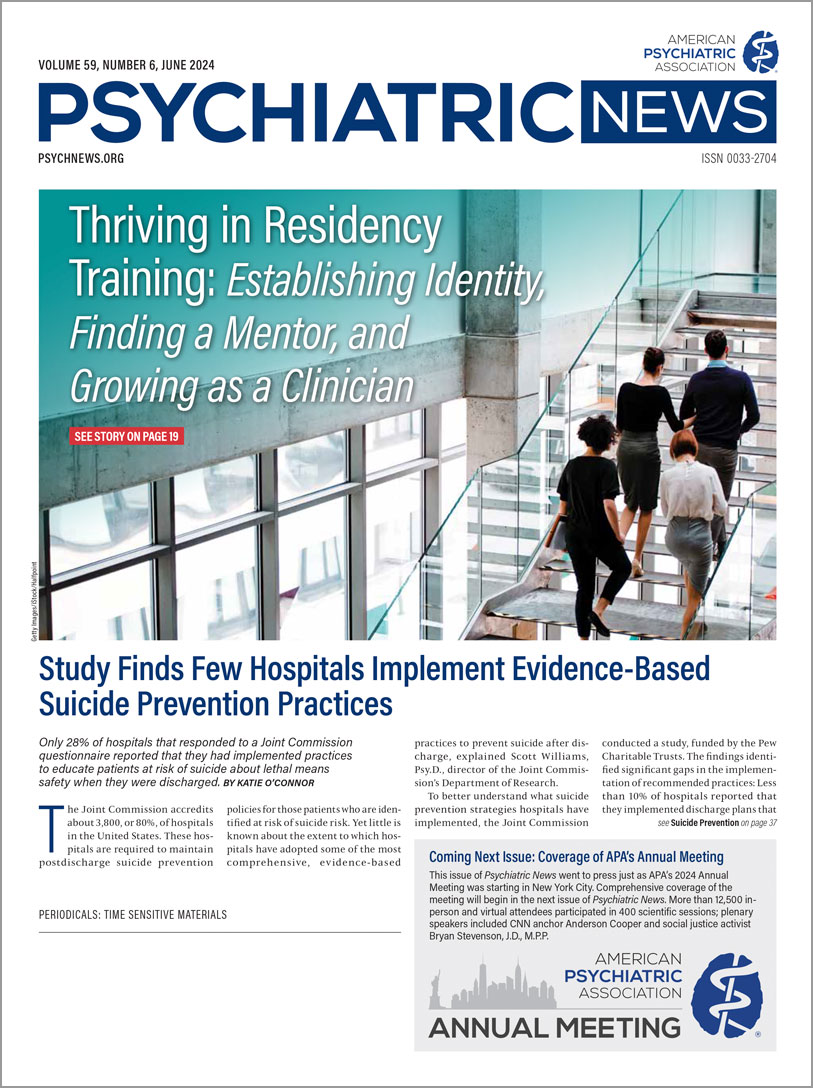Inpatient hospital care remains the standard approach to treat patients experiencing acute mental illness. In recent years, various research teams have been exploring alternatives to inpatient care to help free up limited beds and enable patients to recover while remaining close to their families. Such examples include intensive home care (with regular clinical visits and as-needed support available either in person or virtually) and residential communities that support illness recovery in a group-based setting.
An outstanding question is whether acutely ill patients in these nontraditional settings can form a strong therapeutic alliance with their therapists (and vice versa), especially in settings that make use of virtual care. Research has shown that a strong therapeutic alliance is one of the best predictors of treatment success and can be especially important in acute care situations.
A study in Psychiatric Services suggests that strong patient-therapist bonds can indeed be formed in alternative hospitalization settings.
Dana Tzur Bitan, Ph.D., an associate professor of clinical psychology at the University of Haifa, Israel, and colleagues recruited 188 patients who needed inpatient psychiatric care for a range of disorders. The patients were assigned to one of three treatment settings:
•
Sixty-one patients were admitted to a standard inpatient psychiatric ward at a medical center.
•
Eighty-eight patients went to a Soteria House, a set of residential care centers whose emphasis is on creating a supportive therapeutic community. While Soteria houses employ a full range of mental health professionals, staff try to create a nonhierarchical environment by avoiding coercion and not using medications as first-line treatments.
•
Thirty-nine patients received telepsychiatry-based hospitalization in which patients recovered at home but had ongoing monitoring and online access to psychiatrists, nurses, and other professionals 24/7.
The researchers noted that the distribution was not random; each patient was allocated to a particular setting based on a psychiatrist’s clinical judgment. However, the data analysis did control for variables like age; diagnosis; length of stay; and marital, residential, and social benefit status.
Each patient and his/her regular therapist (the psychologist, social worker, or psychiatric nurse who would spend the most time with the patient) completed the Session Alliance Inventory (SAI) following the first therapy session and again at discharge or treatment termination. The SAI tracks how both participants in the therapeutic relationship feel on issues such as being appreciated, agreement on therapy goals, and development of a bond. Overall, 90 therapists participated in the study, as many had multiple regular patients.
At the patient level, there were no statistically significant differences in SAI scores among the groups at the start of treatment or at discharge, though the average scores for patients who received online hospitalization were numerically higher at both time points.
Average SAI scores among therapists providing online care, however, were statistically higher after the first session compared with the therapist scores in the other two settings. Therapist scores strengthened minimally over time, so by discharge there was no longer a statistical difference in alliance scores between online therapists and Soteria therapists, though online was still superior to standard inpatient care.
Tzur Bitan told Psychiatric News that these results were somewhat surprising; her group hypothesized that Soteria House care would produce the strongest therapeutic alliance early on, given the model’s emphasis on patient-therapist communication.
“It is possible that therapists in the technologically assisted module were more engaged in the therapeutic process because they were treating from afar and tended to keep close monitoring,” she said. This contrasts with the hospital or Soteria setting in which therapists know there are other staff who can also monitor patients’ status around the clock.
Tzur Bitan added that therapist-related alliance scores did strengthen a lot in the Soteria group by discharge time, though she stressed that improvement was not statistically different from that of the other groups. However, it supports the idea that therapists absorb the Soteria principle of equal and nonauthoritative collaboration with patients. “Maybe as time progresses, you really get to know the person you are working with and develop a stronger sense of attachment,” she said. “That, of course, remains to be examined in future studies assessing mediators for these effects.”
Amy Lopez, Ph.D., L.C.S.W., an assistant professor of psychiatry at the University of Colorado Helen and Arthur E. Johnson Depression Center, found the results for online care encouraging and expected. Lopez, who was not involved with this study, studies how technology shapes the therapeutic alliance in mental health care.
While prior research had shown that alliance is impacted through telehealth and many did not feel confident in using it routinely as a treatment modality, the pandemic created a different playing field. “Providers now had to use online technologies to provide care, and many found out it wasn’t as bad as they had envisioned,” she said. She also said that some therapists enjoy the ability to work with patients without worrying about aggression or agitation and thus could let their guard down and connect more quickly.
As for the lack of strengthening over time, Lopez thinks it may be due to what’s known as the lack of a “waiting room effect.” “In traditional hospital or residential care settings, patients have opportunities for friendly chit-chat when nurses deliver medication or bond with another patient during group therapy, and you don’t get these chances with online care.”
It’s a tradeoff, but probably not a detrimental one, she added. “There may be less chit-chat, but the chance to undergo acute care while still being able to sleep in your own bed will appeal to many patients.” She believes that technology-assisted inpatient care will continue to grow in popularity and be especially valuable for certain populations such as individuals with disabilities.
“The results of our study may encourage policymakers to continue exploring the utility of care settings that offer alternatives to hospitalization and provide care in patients’ natural settings,” Tzur Bitan and colleagues wrote. “To further advance research and clinical care, additional studies are needed to assess the effects of these dynamics on recovery, stigma, social inclusion, and therapeutic outcomes.”
The authors reported no external funding for this study. ■


